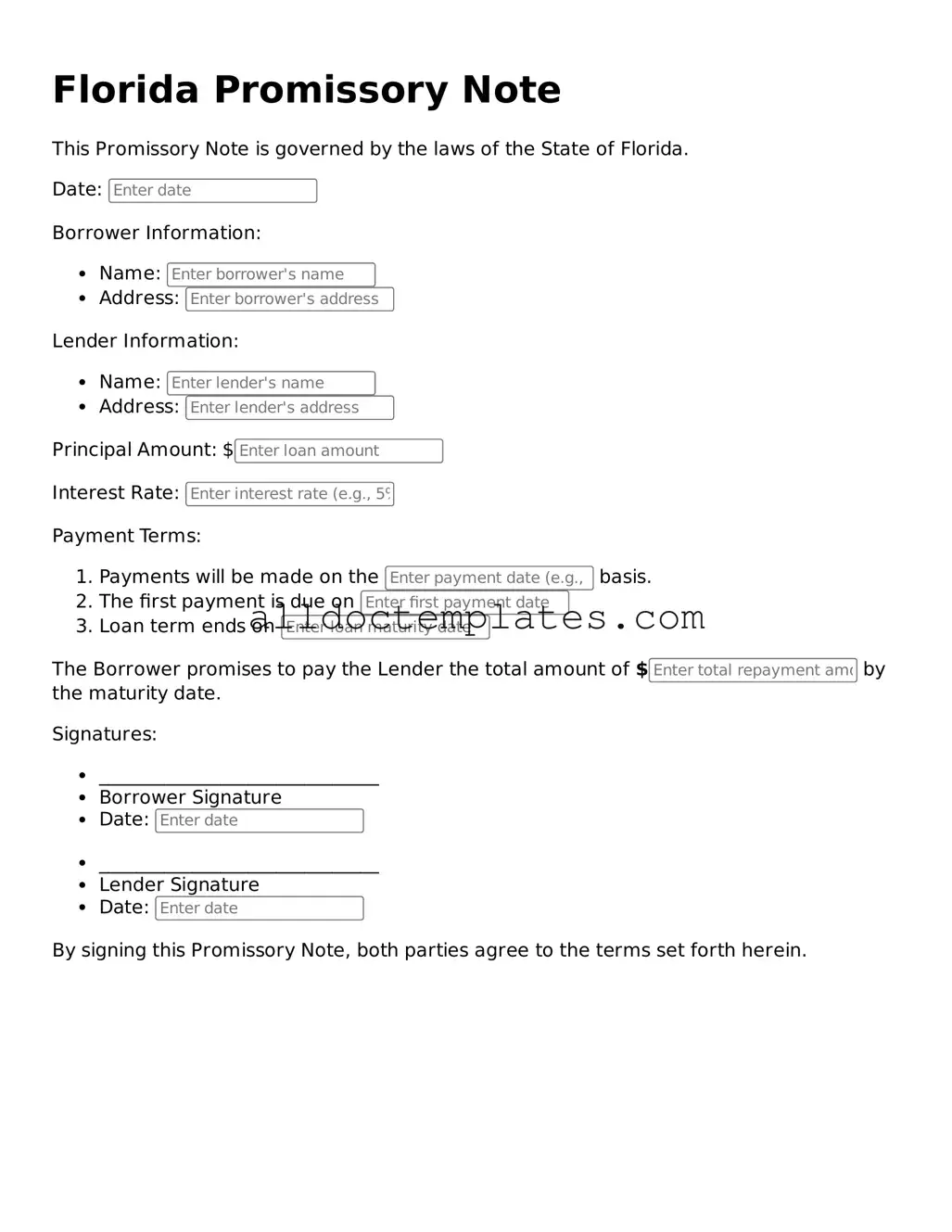Free Promissory Note Document for Florida State
A Florida Promissory Note is a legal document that outlines a borrower's promise to repay a specified amount of money to a lender under agreed-upon terms. This form serves as a crucial tool for both parties, providing clarity and security in financial transactions. Understanding its components can help ensure that the lending process is smooth and transparent.
Get Your Form Now
